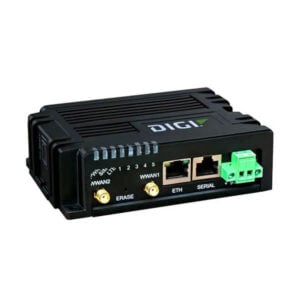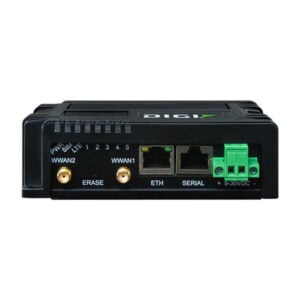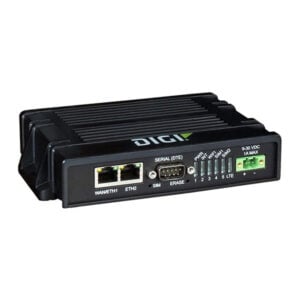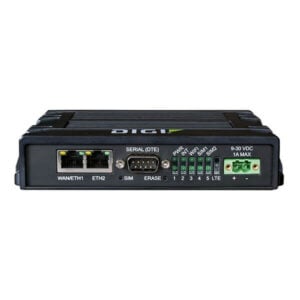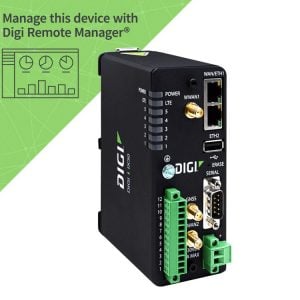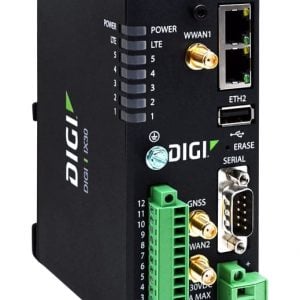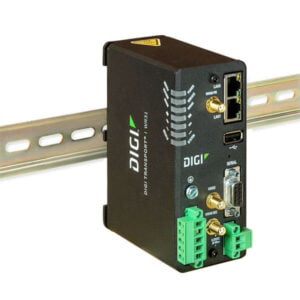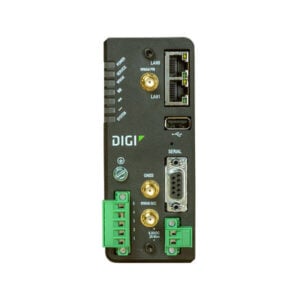Navigating the Australian 3G Network Shutdown
Emily Dang2024-05-22T12:20:37+10:00The 3G network shutdown in Australia isn’t as far off as most think. In just under a year, Australia’s three cellular network providers will begin sunsetting 3G connectivity, creating what could be a considerably disruptive experience for any business and person reliant on 3G. What should you know as a business leader with systems and hardware reliant on 3G, and what’s the best, most effective way to prepare?
In this article, we will delve into what the 3G shutdown entails, its implications for businesses and 3G users, the timeline for its completion, and most importantly, how businesses can smoothly transition to 4G/LTE routers for uninterrupted connectivity.
We’ll also share a basic project execution plan to give you a closer look at what it will take to prepare for the end of 3G connectivity.
Hardware? To address this transition, we’ll also share a hardware solution that’s uniquely built to provide fast, secure, and reliable connectivity as a solution.
Understanding the 3G Shutdown
The 3G shutdown signifies the discontinuation of third-generation mobile networks, which were once revolutionary but are now outdated in the face of newer, more advanced technologies.
The shutdown enables telecom companies to allocate resources towards enhancing and expanding 4G and 5G networks, catering to the ever-growing demand for faster and more reliable connectivity.
Resources to be allocated include hardware, infrastructure, and freeing up spectrum that is currently used by 3G signals.
When will 3G Shutdown in Australia?
Australia’s big three, Telstra, Optus, and Vodafone have set different dates for the official discontinuation of 3G support. Here’s what those look like:
Telstra 3G Shutdown Date
Telstra plans to complete the 3G shutdown on June 30, 2024, marking the end of 3G services for its customers.
Optus 3G Shutdown Date
Optus is scheduled to stop supporting 3G in September, 2024, thereby discontinuing 3G services for its users.
Vodafone 3G Shutdown Date
Vodafone will cease its 3G support in December, 2023, as it transitions its customers to newer network technologies.
What the 3G Shutdown Means for Businesses
The 3G shutdown is a significant shift for businesses with 3G-reliant technology. Here’s a closer look at 5 ways the shutdown could affect your business’s technology ecosystem:
Device Compatibility Challenges
The discontinuation of 3G networks means that businesses relying on devices and equipment exclusively compatible with 3G connectivity will face compatibility challenges.
Upgrading to 4G/LTE-compatible devices and routers will be necessary to ensure continued connectivity and operations.
Service Disruptions and Financial Loss
As telecom providers progressively shut down their 3G networks, businesses relying on 3G for critical services like point-of-sale systems, remote monitoring, tracking devices in vehicle fleets, and machine-to-machine communication will experience service disruptions — downtime that will lead to loss of productivity, customer dissatisfaction, and potential financial loss.
Network Congestion
The transition from 3G to 4G/LTE will lead to an increased number of users on these newer networks. This surge in demand can result in network congestion, potentially impacting the reliability and speed of mobile data connections for businesses during peak usage periods.
Security Vulnerabilities
3G networks, being older technologies, may lack advanced security features compared to their 4G/LTE counterparts. Businesses that continue to rely on 3G connectivity may be exposed to higher security risks, including premises alarm systems that will not work, and potential data breaches and cyber-attacks. Upgrading to 4G/LTE networks enhances security measures, protecting sensitive business information.
Technological Advancements
The 3G shutdown serves as a catalyst for businesses to embrace the advancements offered by 4G/LTE networks. 4G/LTE networks provide faster speeds, improved reliability, and enhanced capabilities such as IoT connectivity and real-time data transfer.
Transitioning to 4G/LTE helps ensure that businesses maintain a competitive edge in the digital landscape.
A Basic Project Execution Plan
Switching from 3G to 4G/LTE connectivity may seem like a complex task, but a well-defined plan will streamline your transition. What does a well-planned 3G to 4G/LTE project plan look like? Below is a basic 9-part, step-by-step plan we’ve created.
Note: Sapply has in-house experts ready to speak to you about your unique technology ecosystem and help create a plan designed for your business. Contact our sales team on +61 2 9439 8887 or email us at [email protected] to get in touch.
Step 1: Evaluate Network Requirements
Assess your business’s specific connectivity needs and determine the required bandwidth, coverage area, and data usage. This evaluation will help you choose the appropriate 4G/LTE plan and router configuration.
Step 2: Select a Suitable 4G/LTE Router
Research and select a reliable 4G/LTE router that meets your business requirements. Consider factors such as network compatibility, security features, scalability, and management capabilities. The Digi IX10 rugged router, with its compact size and industrial-grade features, could be an excellent choice.
Step 3: Acquire 4G/LTE SIM Cards
Contact your chosen telecom provider and obtain the necessary 4G/LTE SIM cards for your router. Ensure the SIM cards are compatible with the router and capable of supporting the desired network bands.
Step 4: Configure the 4G/LTE Router
Follow the manufacturer’s instructions to configure the 4G/LTE router. Connect the router to your computer or mobile device using an Ethernet cable or wireless connection, and access the router’s administration interface. Configure the necessary settings, including network parameters, security protocols, and carrier information.
Step 5: Insert and Activate SIM Cards
Insert the acquired 4G/LTE SIM cards into the designated slots on the router. Ensure they are securely inserted and activate them according to the instructions provided by the telecom provider. This activation process may involve calling a designated number or visiting a specific online portal.
Step 6: Test Connectivity and Ensure Redundancy
Once the SIM cards are activated, test the connectivity of the 4G/LTE router. Ensure that it establishes a stable connection to the network. Additionally, configure redundancy features, such as dual SIM functionality, to ensure uninterrupted connectivity even in the event of a network disruption.
Step 7: Migrate Devices to the New Network
Identify all devices and equipment that currently rely on 3G connectivity. Update the network settings on these devices to connect to the new 4G/LTE network. This may involve modifying the APN (Access Point Name) settings or configuring network profiles on each device.
Step 8: Monitor and Optimize Performance
Monitor the performance of the 4G/LTE network and devices following the switch. Ensure that all devices are successfully connected and operating as intended. Optimize network settings, such as signal strength and bandwidth allocation, to achieve optimal performance.
Step 9: Train Users and Provide Support
Educate employees and users about the switch to 4G/LTE connectivity. Provide necessary training on using the new network and address any questions or concerns they may have. Offer ongoing technical support to assist users during the transition period.
By following this step-by-step plan, technicians can seamlessly transition from 3G to 4G/LTE connectivity in businesses. This level of preparedness should avoid uninterrupted operations and provide the benefits of faster and more reliable network connectivity.
Introducing the Digi IX10 — Lightening-Fast 4G/LTE Connectivity for Businesses
With the 3G shutdown looming, your transition to 4G/LTE connectivity to avoid disruptions and capitalize on the benefits of faster and more reliable networks will require investing in the right hardware.
The Digi IX10 is a rugged, reliable, cost-effective option, designed for industrial environments. Its compact design also saves space in already cramped racks too. Here are four critical features that make it a smart option for your transition to 4G/LTE:
Dual SIM Redundant Connectivity
By leveraging the Digi IX10, businesses can ensure redundant connectivity through dual SIMs and Digi SureLink®, eliminating the risk of downtime due to signal loss or network congestion.
The router’s support for global bands simplifies distribution, deployment, and management across multiple regions, streamlining operations for businesses with a global presence.
Built-in Device Security and Data Privacy
Digi IX10 prioritizes security with its built-in Digi TrustFence® feature, which safeguards device security, device identity, and data privacy. Your critical business information will remain protected from potential threats in an increasingly digitized landscape.
Remote “Anywhere” Management With Easy Setup and Configuration
To ease the setup and management of the Digi IX10, you can leverage the Digi Remote Manager® platform, which provides a centralized interface for easy configuration, mass deployment, and ongoing monitoring of multiple routers. This streamlined management capability empowers businesses to stay in control of their network infrastructure.
TRANSITION TO 4G LTE DEVICES
Get Your Custom 4G/LTE Transition Plan
At Sapply, we understand the challenges businesses face when transitioning from 3G to 4G/LTE connectivity. With our unmatched expertise and comprehensive range of solutions, we are uniquely equipped to guide businesses through this crucial transition.
Our team of experienced professionals will assess your specific needs, recommend the most suitable 4G/LTE routers, assist with SIM card acquisition, and provide expert configuration and support services.
With our deep understanding of network requirements and strong partnerships with leading technology providers, we ensure a seamless and efficient switch to 4G/LTE, enabling businesses to embrace lightning-fast connectivity and unlock their full potential. Trust Sapply.com as your trusted partner in navigating the 3G to 4G/LTE transition.
Get Expert Advice for Your Transition 4G/LTE Connectivity
Contact our sales team on +61 2 9439 8887 or email us at [email protected] for help creating your 4G/LTE transition plan

